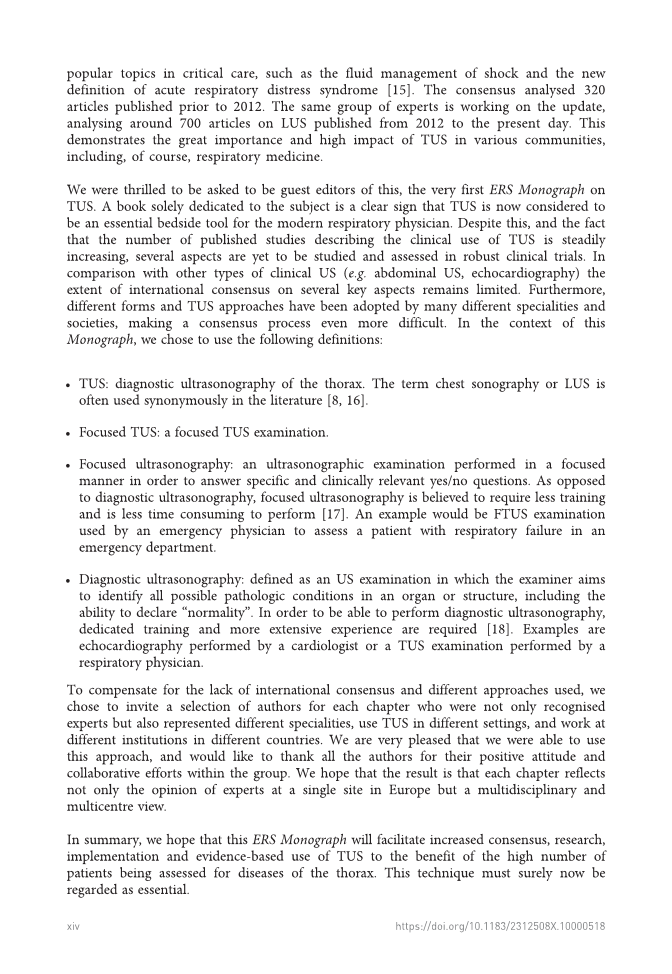popular topics in critical care, such as the fluid management of shock and the new definition of acute respiratory distress syndrome [15]. The consensus analysed 320 articles published prior to 2012. The same group of experts is working on the update, analysing around 700 articles on LUS published from 2012 to the present day. This demonstrates the great importance and high impact of TUS in various communities, including, of course, respiratory medicine. We were thrilled to be asked to be guest editors of this, the very first ERS Monograph on TUS. A book solely dedicated to the subject is a clear sign that TUS is now considered to be an essential bedside tool for the modern respiratory physician. Despite this, and the fact that the number of published studies describing the clinical use of TUS is steadily increasing, several aspects are yet to be studied and assessed in robust clinical trials. In comparison with other types of clinical US (e.g. abdominal US, echocardiography) the extent of international consensus on several key aspects remains limited. Furthermore, different forms and TUS approaches have been adopted by many different specialities and societies, making a consensus process even more difficult. In the context of this Monograph, we chose to use the following definitions: • TUS: diagnostic ultrasonography of the thorax. The term chest sonography or LUS is often used synonymously in the literature [8, 16]. • Focused TUS: a focused TUS examination. • Focused ultrasonography: an ultrasonographic examination performed in a focused manner in order to answer specific and clinically relevant yes/no questions. As opposed to diagnostic ultrasonography, focused ultrasonography is believed to require less training and is less time consuming to perform [17]. An example would be FTUS examination used by an emergency physician to assess a patient with respiratory failure in an emergency department. • Diagnostic ultrasonography: defined as an US examination in which the examiner aims to identify all possible pathologic conditions in an organ or structure, including the ability to declare “normality”. In order to be able to perform diagnostic ultrasonography, dedicated training and more extensive experience are required [18]. Examples are echocardiography performed by a cardiologist or a TUS examination performed by a respiratory physician. To compensate for the lack of international consensus and different approaches used, we chose to invite a selection of authors for each chapter who were not only recognised experts but also represented different specialities, use TUS in different settings, and work at different institutions in different countries. We are very pleased that we were able to use this approach, and would like to thank all the authors for their positive attitude and collaborative efforts within the group. We hope that the result is that each chapter reflects not only the opinion of experts at a single site in Europe but a multidisciplinary and multicentre view. In summary, we hope that this ERS Monograph will facilitate increased consensus, research, implementation and evidence-based use of TUS to the benefit of the high number of patients being assessed for diseases of the thorax. This technique must surely now be regarded as essential. xiv https://doi.org/10.1183/2312508X.10000518
